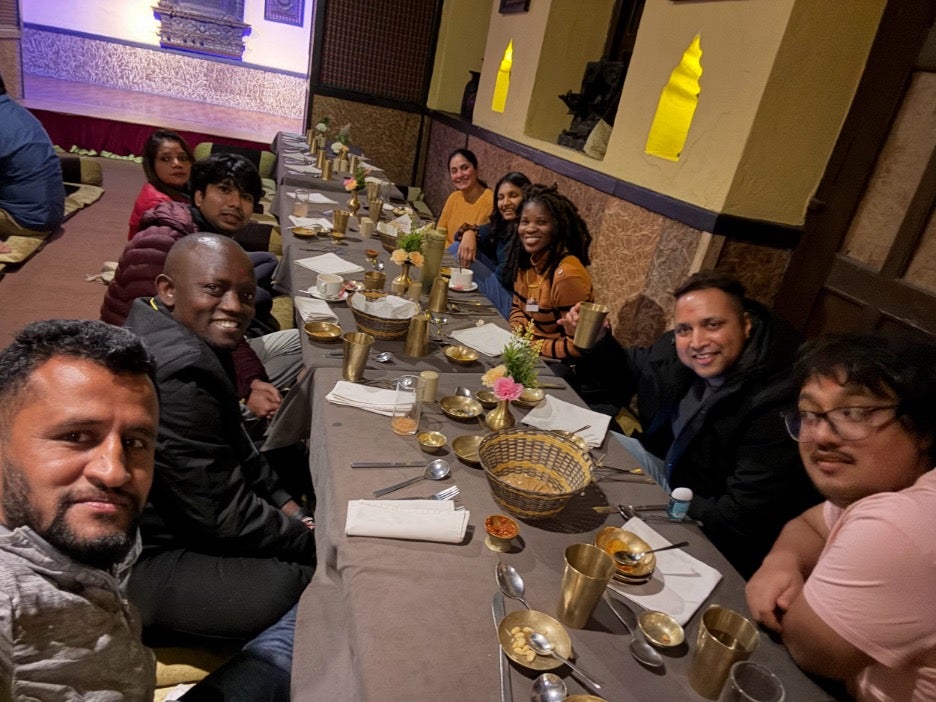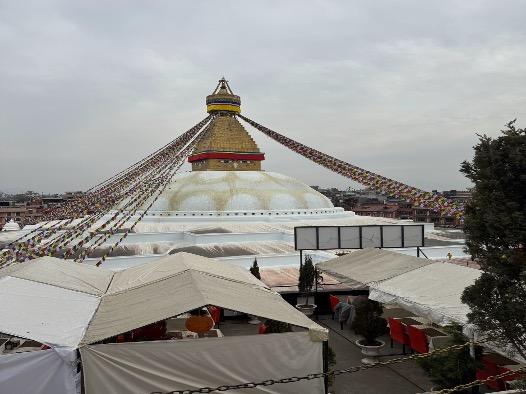NP Winter Amp Day 3
Day 3: Sunday, Jan 5
Meeting with WCN and visiting cultural sites
By Opeyemi Ogedengbe
Our day began with a chat over breakfast at the hotel where we tried Yoghurt with Puri Bhaji- a Cuisine synonymous with Nepalese & South Asia and Bread & Toast. The meals were tasty and service at the hotel was excellent, as the staff were hospitable. 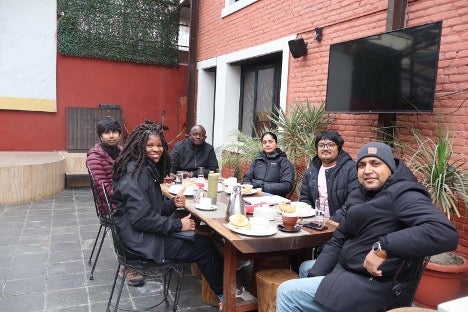
We started the day’s activities afterward by visiting Wildlife Conservation Nepal (WCN), about an 18-minute drive from our hotel. The drive through the city revealed that communities are distinguished by different colored bridges such as black, yellow, red, etc which serve as landmarks for recognizing the terrains and communities, which was quite interesting. Additionally, the roads were narrow and serpentine; it is truly surprising how motor vehicles and cycles fit into the road at the same time without colliding with one another.
On arriving at WCN, we were well-received and welcomed by the staff and the director of WCN in the person of Dr. Sanjeevani Yonzon- an Environmental biologist who gave us a detailed history and activities of WCN which specializes in three cardinal areas:
- Wildlife conservation that culminates in promoting the beta biodiversity of its wildlife like Rhinos, Tigers, Pandas, Monkeys, elephants, bar-headed geese, etc.
- Capacity building that mitigates increasing climate issues like glacier lake outburst flood (GLOF), forest fires & mortality from landslides via collaboration with professionals, and championing women's involvement in forest preservation by providing them seedlings to grow for a small profit that allows them to purchase essentials.
- Environmental education that advocates clean energy production, and local curriculum creation that makes 36,500 Nepalese schools become green schools through approachable wildlife practices, poems, teaching, and art creation as early as grade one.
We had engaging and interesting conversations. Dr. Yonzon shared her current interest in branching into the Circular Economy, which I find intriguing as it involves knowledge of financial and business acumen. Circular economies require an innovative interdisciplinary approach that would drive impact and future change when stakeholders and students are exposed to systemic thinking. Our Courtesy visit at WCN climaxed with an exchange of mementos and a WCN facility tour.
Thereafter, we explored some of the historic sights and sounds in Kathmandu by making a quick stop at the largest and one of the oldest dome temples for the Buddhists called ‘Boudhanath Stupa’. We were thrilled with the magnificent edifice, and the array of tourists and worshippers it attracts, some of whom made oblation. 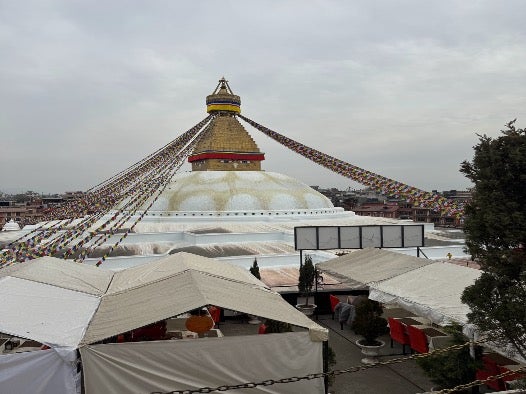
Next we had a rooftop lunch at the Gotama restaurant within the Boudhanath premises, which offered a picturesque view of the temple that further revealed its grandeur and beauty. Our lunch at the rooftop restaurant offered a perfect blend of flavor and atmosphere as we differently tasted Nepalese dishes ranging from Ramen Noodles, Double fry Pork, Kima Noodle Buff/ chicken, mixed Thukpa with a refreshing Lemon ginger Honey tea that you can never go wrong with any time any day, especially during the winter season. Right and Below: Rooftop views of the Boudhanath Stupa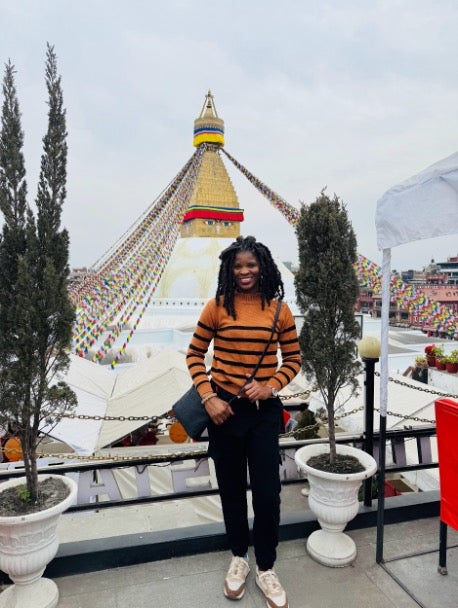
After the revitalizing meal that provided an energizing boost, we visited the Swayambhu Temple, a UNESCO World Heritage Site, where we excitedly challenged ourselves to climb the 365 flights of stone stairs needed to reach the peak of the temple. The trip ascending the stairs and tour of the surrounding peak were bustling with numerous monkeys hovering around the temple. Also, a panoramic view of the Himalayas region was visibly captured at the temple peak, even though its clarity was blurred out by the poor air quality.
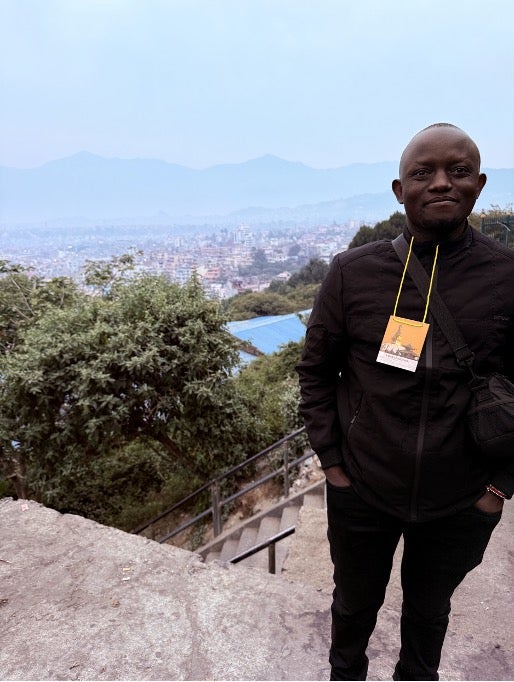
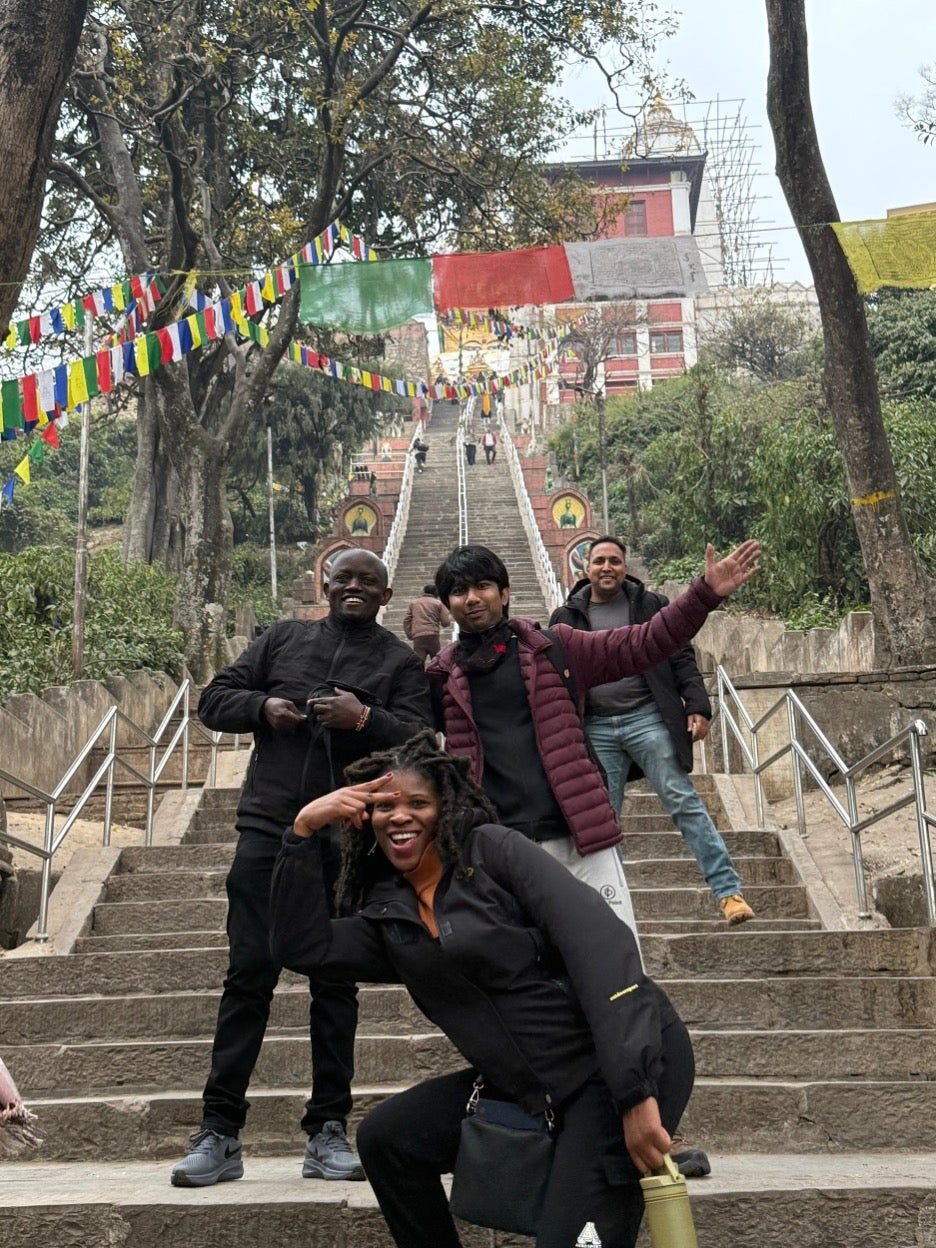
We treated our palate to a variety of sumptuous Nepalese cuisine for dinner consisting of fried potatoes, a refreshing & unique aroma of Masala tea, or lemon ginger honey tea, chicken mo-mo, chicken choila, mixed bean soups as appetizer. The main course was rice with white boar/chicken and sweet yogurt with cherry was for dessert at the Nepali Chulo. The meals, even though served in very small portions, were filling. This is a must-visit restaurant for authentic Nepali dishes served on brass plates and drinks in brass cups while enjoying the melodic ambiance of unique cultural songs and dance choreography. Right: Swayambhu temple and Himalayan view. Below: Dinner
